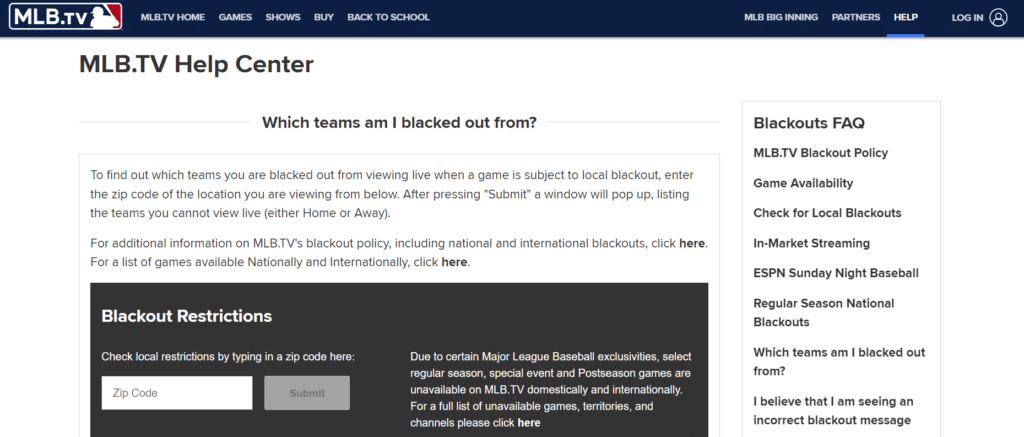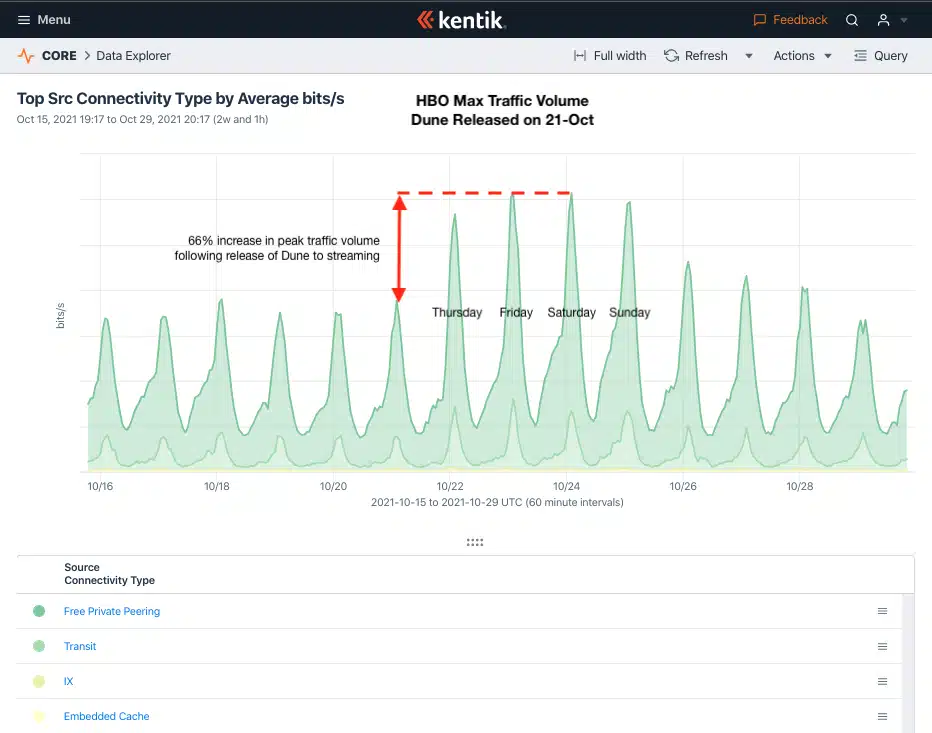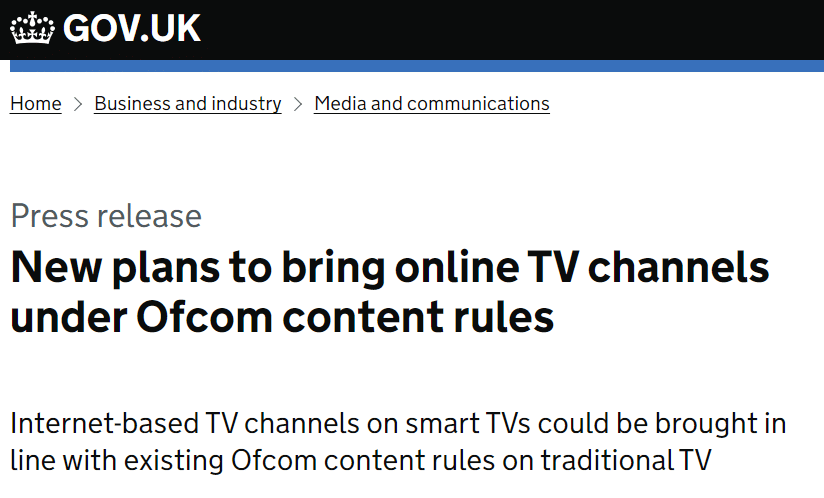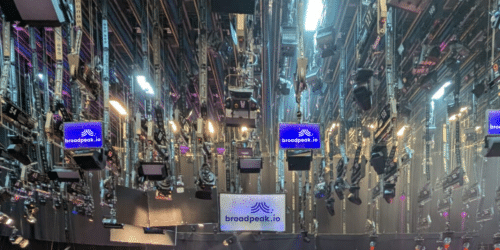The digital age has witnessed the rise and evolution of various broadcasting platforms, with FAST (Free Ad-supported Streaming TV) distributors like Samsung TV Plus, Roku, PlutoTV, Freevee, and others taking a significant chunk of the audience’s attention. The steady growth of these platforms can gauge the market’s maturity. For instance, following Allied Market Research insights, the market was valued at $6.9 billion in 2022 and is projected to reach $28 billion by 2032, growing at a CAGR of 15.4% from 2023 to 2032, demonstrating a sustained and future appeal to audiences and advertisers alike.
Why the shift to PAST (Premium FAST)?
Such numbers underscore the market’s vibrancy. And as these platforms grow, they’re catching the eye of more premium brands and content providers. A bit of FOMO has been in the “air”. Brands that once might have eschewed FAST as a ‘lesser’ platform now see it as an invaluable tool to broaden their horizons and tap into a more diverse viewer base.
For instance, let’s consider the recent interest shown by MLB (Major League Baseball). A game revered by millions worldwide is now leveraging the reach of FAST platforms, making baseball content more accessible in Europe. This paradigm shift isn’t restricted to MLB alone. Several high-tier brands are leveraging opportunities on FAST platforms to extend their viewership base: enter here, for example, World Poker Tour or Motorvision.
But why is this shift happening now? Gavin Bridge’s insightful discussion on VIP+ sheds light on the new concept of PAST (Premium FAST channels), hinting at how premium channels are currently looking for opportunities beyond traditional means, leveraging platforms like FAST to attain a broader reach.
What does it mean for Distributors?
While being very interesting to reach a higher-end audience, this new wave of interest brings challenges. As more premium brands move to FAST platforms, distributors will need to keep up with an extensive list of requirements:
- Live Sport Channels and Blackout Policies:
Live sports broadcasting comes with its intricacies, notably the notorious blackout policies. These are measures that prevent the airing of sports events in specific locales to protect the interests of the primary broadcasters in that area. For FAST distributors, navigating these policies is crucial. They must ensure a harmonious balance between catering to a broad audience and respecting regional broadcasting rights. Respecting requirements requires a robust and agile content distribution system that automatically enforces and adheres to regional limitations.

- Content Protection:
The allure of premium content is its high value and sometimes exclusivity. However, this exclusivity makes it a prime piracy and unauthorized sharing target. As such, FAST distributors need to invest heavily in advanced encryption technologies and digital rights management systems. In this digital age, where anyone can share content with a single click, it’s paramount for platforms to implement layers of security measures, ensuring that their premium offerings remain just that: premium.

- Handling Surge Traffic:
Live events, particularly those from big-ticket brands or significant global happenings, can draw millions of viewers simultaneously. This massive influx can strain servers, potentially leading to downtimes or reduced streaming quality. To mitigate this struggle, FAST platforms need scalable infrastructures. Leveraging cloud-based solutions and distributed server networks can help platforms easily handle these traffic surges, ensuring a seamless viewing experience even during peak times.

- Regulatory Rules:
As content quality improves, it often brings a suitcase of regulatory rules. These regulations could range from content rating stipulations to regional norms. Staying compliant is not just about adhering to broadcasting standards; it’s about ensuring the platform remains reputable and avoids potential legal pitfalls. Thus, distributors must have a dedicated team or system to oversee and implement these regulations.
A good example is what happened in September 2023 in the UK, as the government announced plans to bring online TV channels under Ofcom content rules. Ofcom content rules are outlined in the UK Broadcasting Code, and include guidelines on various issues, including Protecting the Under-Eighteens, Harm and Offence, and Crimes, among others.

- Low Latency:
There’s nothing more frustrating for a viewer than witnessing a crucial game moment several seconds after the rest of the world, all thanks to streaming lags. In live games and events, real-time broadcasting without delays is vital. Ensuring low latency requires a combination of robust server infrastructures, efficient content delivery networks, and optimized streaming protocols. It’s not just about speed; it’s about ensuring viewers are always in the moment.
- Data and Analytics:
In today’s data-driven world, understanding your viewer is the key to retention and growth. Brands partnering with FAST distributors crave in-depth analytics — from viewer demographics to watching habits. Distributors should prioritize data collection and analysis, offering comprehensive insights to guide content strategies, ad placements, and more. A holistic view of the viewer can shape a more tailored and engaging streaming experience.
- Client-side Ad Tracking:
Advertisements are a significant revenue source for FAST distributors. Premium brands, in their quest for maximizing ROI, require precise ad tracking on the client side. It involves understanding when an ad was viewed, how much of it was watched, and its impact. Implementing efficient tracking mechanisms not only appeases advertisers but also allows platforms to optimize ad delivery for their audience.
- Quality of Experience (QoE):
At the heart of any successful streaming service is the viewer’s experience. Brands want their content to shine in the best possible light, including everything from high-definition streaming to non-repetitive ad placements. Ensuring high QoE requires continuous monitoring, feedback collection, and technical optimization. After all, a viewer’s loyalty is often as good as their last viewing experience in streaming.
How can distributors leapfrog the competition to welcome Premium Content?
The answer lies in optimizing and upgrading their infrastructure:
- Advanced SSAI (Server-Side Ad Insertion):
Server-Side Ad Insertion (SSAI) represents one of the advancements in digital ad streaming. Unlike the traditional methods where ads were ‘stitched’ onto content at the viewer’s device, SSAI allows ads to be seamlessly integrated at the server level. This approach provides numerous benefits, such as circumventing ad blockers and ensuring a smoother viewer experience. Furthermore, the adaptability of SSAI enables precise content replacement scenarios. For instance, adhering to blackout policies specific to certain zip codes or seamlessly integrating Emergency Alert System (EAS) provisions becomes more manageable with advanced SSAI.
broadpeak.io is an SSAI leveraging Manifest Manipulation, which can enable Automatic Content Replacement for EAS, Watershed, or Blackout. We can help here with programmers’ requirements and local regulations!
- SSAI with DRM Capabilities:
Digital Rights Management (DRM) is a content guardian, safeguarding against unauthorized access and distribution. When SSAI delivers content with DRM capabilities, it ensures that streams are under a protective cloak. Collaborating with experienced DRM vendors and understanding the nuances of different players in the market becomes essential in this integration. This combined approach ensures that content and advertising materials maintain integrity and exclusivity. Choose a SSAI vendor able to manage DRM easily, like broadpeak.io in DASH or HLS.
- Open Caching and Multicast ABR:
Streaming platforms often experience traffic surges, especially during popular live events. Handling such colossal traffic without degradation in service quality demands robust solutions. Open Caching, which decentralizes streaming capacity at the ISP level, allows quicker content retrieval and reduced latency. Multicast ABR (Adaptive Bit Rate) works in tandem by ensuring that content is delivered efficiently to large audiences for linear TV, adjusting the quality dynamically based on network conditions. Both these technologies together play a pivotal role in efficiently managing surge traffic. Reach out to Broadpeak for this.
- Low Latency Packagers:
The essence of live streaming lies in the word “live.” Viewers expect real-time broadcasts, and a few seconds of delay can harm the viewing experience. Low Latency Packagers are specialized tools that compress and package content for swift delivery, ensuring minimal lag between the actual event and the broadcasted stream. In scenarios like live sports or breaking news, these packagers become the unsung heroes, ensuring viewers are always ‘in the moment’ using DASH CMAF Low Latency or HLS-LL. Broadpeak can also help here.
- Analytics:
The digital age is often dubbed the ‘era of data’ for a good reason. Understanding viewer behavior, preferences, and interaction patterns can offer invaluable insights. By investing in sophisticated analytics tools, FAST platforms can provide brands with granular data on how their content is consumed. From identifying peak viewing times to understanding content preferences, analytics paint a comprehensive picture of the audience, empowering brands to make informed decisions. Choose wisely a system able to give you a 360-degree view.
- Client Side Ad Tracking :
Client-side ad tracking in Server-Side Ad Insertion (SSAI) involves tracking pixels or beacons on the user’s device to monitor and collect data on ad performance despite the ads being seamlessly stitched into the video stream on the server side. This approach ensures a smooth and buffer-free viewing experience, enhancing user satisfaction. The granular data collected directly from the user’s device allows for more accurate tracking, offering insights into viewer behavior and ad interaction. These insights are crucial for optimizing ad inventory, ensuring effective targeting and personalization, and maximizing ad revenue and inventory fill rates. Additionally, it aids in detailed reporting and analytics, ensuring compliance with industry standards.
broadpeak.io provides it too.
- Focused Ad Server/DSP (Demand Side Platform):
Advertising is the lifeblood of FAST platforms. However, it’s a delicate balance between monetization and viewer experience. A focused Ad Server or DSP ensures that ads are relevant and delivered non-intrusively. By analyzing viewer data and preferences, these platforms can serve advertisements that resonate with the audience. Moreover, they ensure ad quality is top-notch and frequency is optimized, ensuring viewers are engaged and not overwhelmed.
Each element plays a pivotal role in the intricate tapestry of streaming technology. Every component works in unison to deliver a seamless, engaging, and efficient streaming experience for viewers and brands.
From FAST to PAST to mPAST (multiple premium FAST)
With a growing and now overwhelming FAST offering, the shift from quantity to quality is now well engaged. In mature markets, this shift is accelerating.
FAST channels with low audience performances will need to work on engagement and personalization to survive in this FAST landscape.
Conversely, PAST channels have a bright future and are likely to draw larger audiences as they are attractive for all parties.
• They are simple to promote and to be identified from a discoverability standpoint
• From an end user standpoint, live, exclusive, or fresh content boosts the user experience
• From a monetization standpoint, concentrating larger audiences on a handful of PAST channels is also very appealing to advertisers. They can focus on a limited number of services and target segments with a solid assurance to reach their target audiences.
While distributors need to ensure they source appealing content from studios, sports leagues, or production houses, the bar is also rising for technology.
Distributors must seek technology capable of supporting premium QoE, delivery at scale, monetization optimization, and analytics, all simultaneously, to ensure the content they invest in provides the expected return on investment.
On the other hand, premium broadcasters are regrouping and are also moving to free streaming services to deliver live over broadband.
The recent example of Freely, a new CTV offering backed by major UK broadcasters BBC, ITV, Channel 4, and Channel 5, shows what is likely to happen in other markets.
Fixing the individual app pain point by presenting a single aggregated app to the end users, making the app natively accessible on new smart TVs, and keeping services free will make such services attractive from day one.
When Freely and the likes start streaming to millions of end users, PAST becoming mPAST will be ideally positioned to address this new consolidated competition.
Conclusion
In conclusion, as the landscape evolves and premium brands enter the FAST platform realm, FAST distributors are responsible for matching their pace. The FAST world is ready for a premium makeover, and distributors must be prepared. The shift towards premium content on FAST platforms is significant, with implications for the projected growth in the market and the response from traditional broadcasters. Understanding and addressing the challenges outlined, such as handling blackout policies, protecting content, and ensuring low latency, are crucial for the success of FAST platforms in delivering premium content.
The FAST world is ready for a premium makeover, and distributors must be prepared.
Photo by Abdulwahab Alawadhi on Pexels










